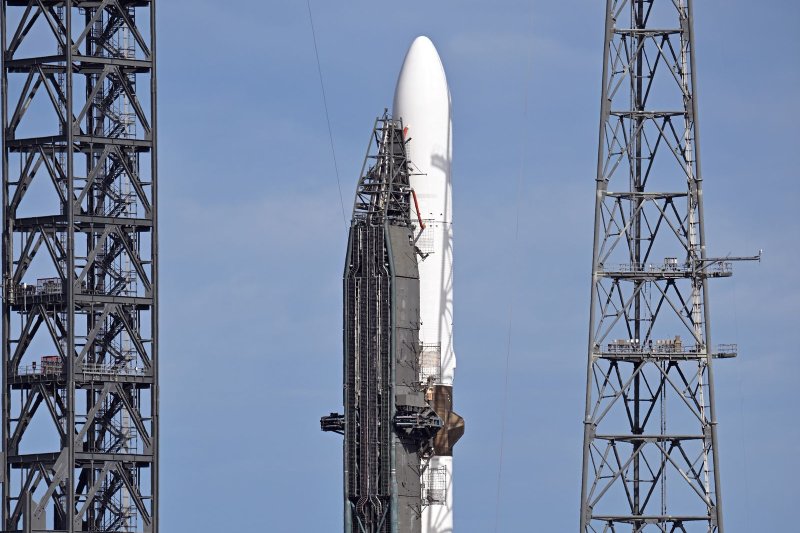Jan. 15 (UPI) — Blue Origin successfully launched its two-stage heavy-lift New Glenn rocket on its unmanned maiden voyage into space early Thursday, achieving the mission’s primary goal of reaching orbit.
The rocket launched shortly after 2 a.m. EST at Launch Complex 36 at Cape Canaveral Space Force Station in Florida.
As the rocket ascended, cheers could be heard erupting in the control room during the live broadcast and persisted for minutes throughout New Glenn’s rise into space.
“LIFTOFF! New Glenn is beginning its first ever ascent toward the stars,” Blue Origin celebrated on X.
Minutes later, Blue Origin confirmed a clean separation of the two-stage rocket, sending its booster back to Earth, where it failed to land on the autonomous droneship in the Atlantic Ocean.
Shortly before the launch reached the 13-minute mark, its primary objective of achieving orbit was confirmed.
“Our key objective today is to reach orbit safely. Anything beyond that is a bonus,” Blue Origin’s Vice President of in-space systems Ariane Cornell said during the broadcast.
She later added that they were “close” to having retrieved the booster.
“It is about collecting data,” she said. “Data is the currency of success. With that being the case, we collected so much data, and man, oh man, we’re going to take that information, we are going to roll that into the next New Glenn.”
“We cannot wait to bring you that next launch,” she added.
The three-hour launch window had opened at 1 a.m. and was set to close at 4 a.m.
Local weather forecasters had predicted only a 40% chance of favorable weather for launch.
Dubbed the NG-1 mission, Blue Origin encountered weather and technology problems that forced the cancellation of two prior planned launches.
Blue Origin scrubbed the New Glenn rocket’s maiden launch early Monday morning after encountering a “vehicle subsystem issue.”
The issue arose due to icing on a power unit within the rocket, WFTV reported.
A planned launch on Friday also was scrubbed, this time due to inclement weather.
Blue Origin engineers have named the New Glenn rocket’s first-stage booster So You’re Telling Me There’s a Chance and had intended for it to land on a droneship named Jacklyn in the Atlantic Ocean.
The 320-foot New Glenn rocket is named after space pioneer John Glenn, who was the first American to orbit Earth.
The reusable rocket is designed to carry the Blue Ring Pathfinder spacecraft in its 23-foot payload fairing and intended for 25 flights.
The Pathfinder is equipped with a communications array, a flight computer and a power system to enable it to support data relay, cloud computing, hosting and refueling missions.
Amazon owner Jeff Bezos founded Blue Origin in 2000, and it has been developing the New Glenn rocket for more than a decade.
The successful launch enables the New Glenn to obtain Department of Defense certification and create a challenge to Elon Musk-owned SpaceX and its Falcon 9 rocket.
“Congratulations on reaching orbit on the first attempt!” Musk said on X following the launch.
The rocket has a reusable first stage that contains Blue Origin’s BE-4 engines fueled by a mixture of liquid natural gas and liquid oxygen.
The New Glenn’s upper stage is powered by Blue Origin’s BE-3U engines that are fueled by a mixture of liquid hydrogen and liquid oxygen.
The upper stage is designed to carry up to 45 metric tons of cargo into low-Earth orbit and would deploy Project Kuiper satellites and equipment into space.
Eventually, the rocket is expected launch humans into space.
#Blue #Origin #successfully #launches #Glenn #rocket












Leave a Reply